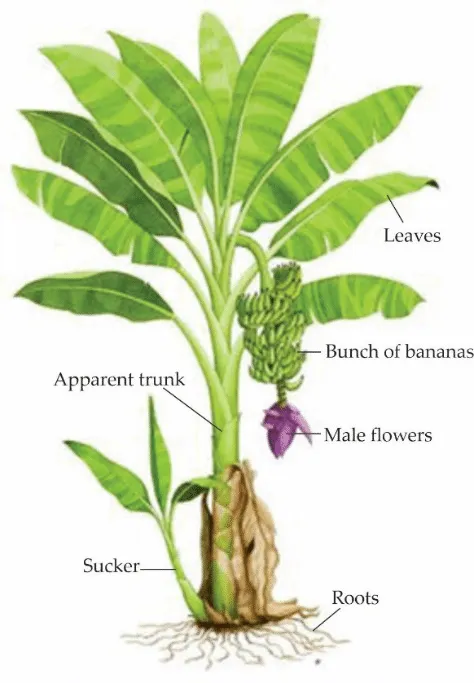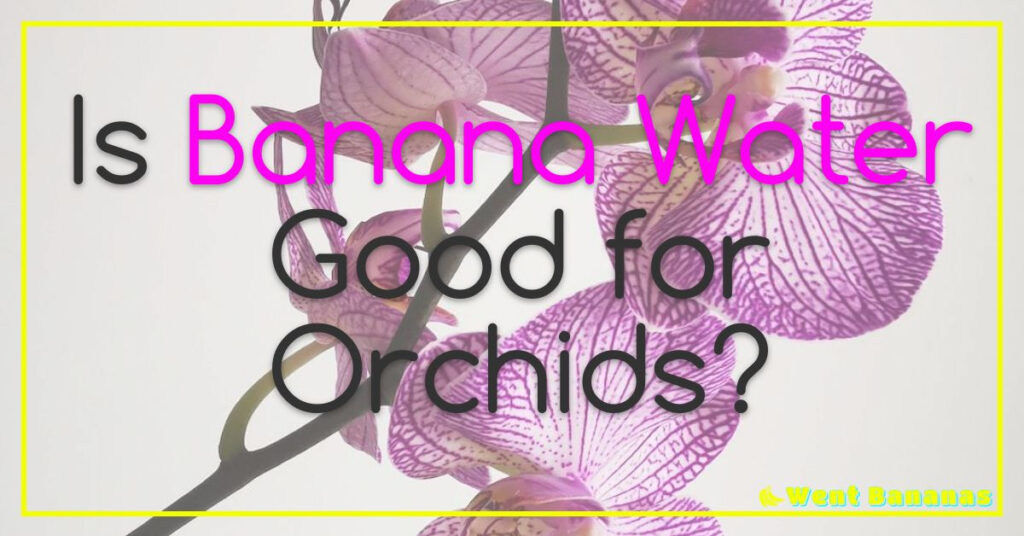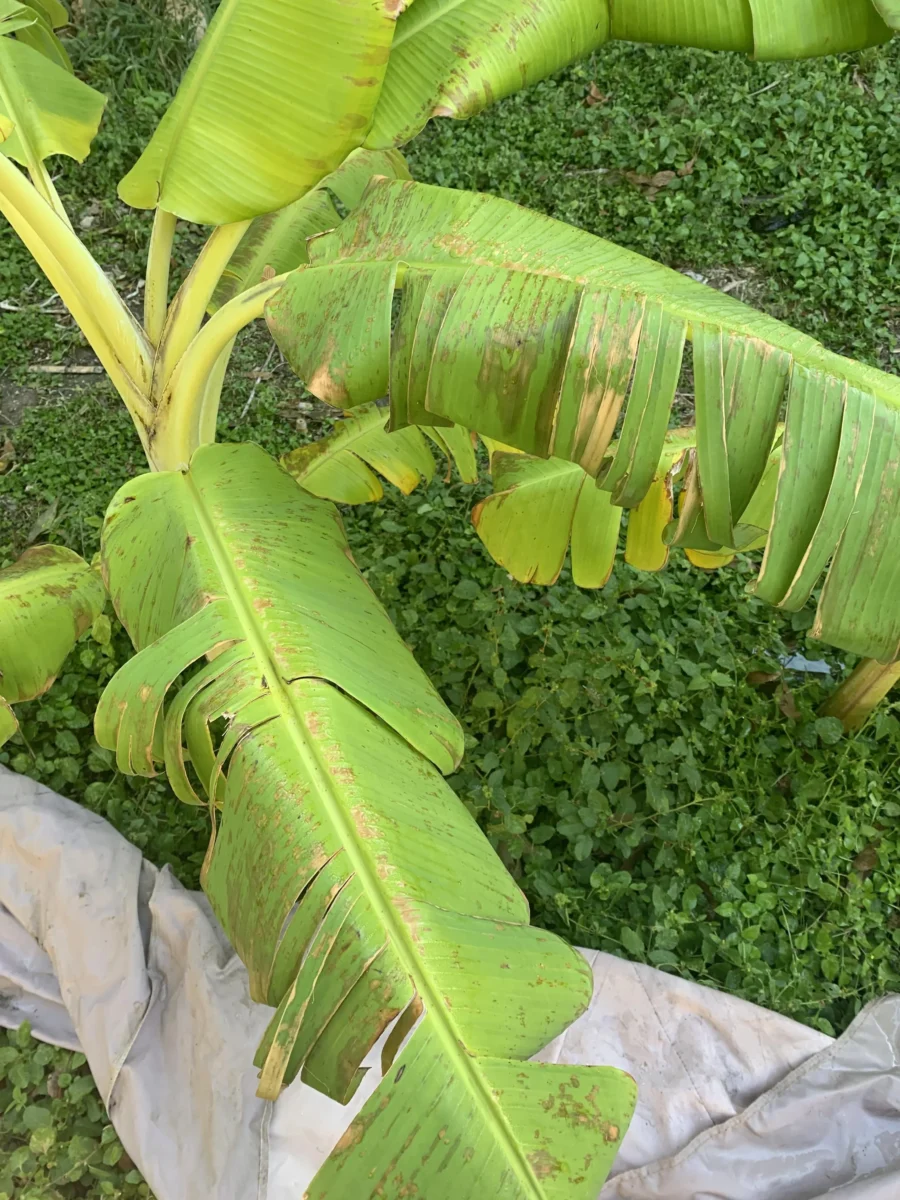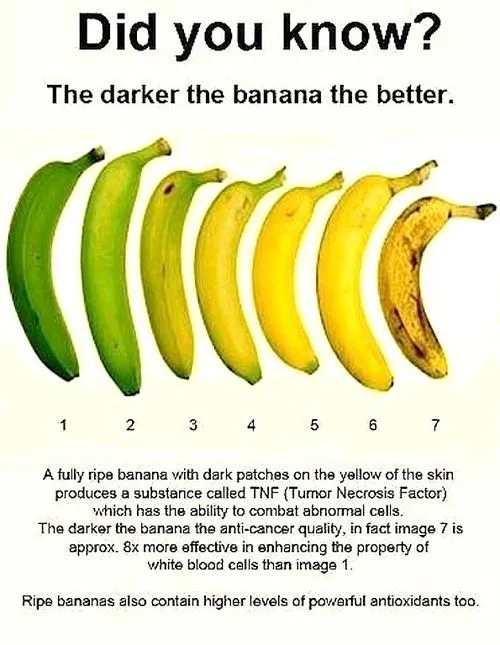Exploring the Anatomy of a Banana Plant: Is the Fruit Actually an Underground Stem?
Have you ever wondered about the structure of a banana plant and whether the fruit is actually an underground stem? As one of the most widely consumed fruits in the world, bananas are surrounded by a lot of curious questions. In this article, we will explore the anatomy of the banana plant and clarify the confusion around whether or not the fruit is indeed an underground stem.

We’ll start by understanding the structure of the banana plant, defining what an underground stem is, and then diving deep into the anatomy of a banana plant. By the end, you’ll have a clear answer to the question of whether a banana is considered an underground stem. Whether you’re a banana enthusiast or just looking to learn something new, read on to discover the truth about one of the most beloved fruits in the world.
Understanding the structure of the banana plant
The banana plant, scientifically known as Musa acuminata, is a fascinating specimen that has been cultivated for thousands of years. Understanding its structure can provide insight into the biology and development of this ubiquitous fruit.

At its core, the banana plant consists of a rhizome that produces a pseudostem – an elongated structure made up of tightly packed leaves. The fruit itself grows from the inflorescence or flower cluster at the end of this stem.
But there’s more to it than just that. The banana plant also has an intricate root system that anchors it firmly in place and absorbs nutrients from the soil. These roots are supported by underground rhizomes, which allow the plant to spread and establish new growth.
In addition to its physical structure, understanding how bananas are grown and harvested is also important for those looking to learn more about this popular fruit. From planting and fertilization to pruning and harvesting techniques, there are many factors that can affect the growth and quality of bananas.
Whether you’re a farmer looking to improve your crop yield or simply interested in learning more about one of nature’s most delicious treats, understanding the structure of the banana plant is a valuable piece of knowledge that can enhance your appreciation for this amazing species.
What is the definition of an underground stem?
An underground stem, also known as a rhizome, is a type of plant structure that grows horizontally underground. In the case of bananas, the rhizome is responsible for producing new shoots and roots, as well as storing nutrients for the plant’s growth and development.
The banana plant’s rhizome is particularly interesting due to its ability to produce “suckers,” or new plants that can grow from its nodes. This makes it possible for banana farmers to propagate their crops quickly and efficiently without having to rely on seeds.
Additionally, the rhizome plays a crucial role in protecting the banana plant from environmental stressors such as drought or extreme temperatures. Its ability to store nutrients enables it to provide sustenance during times of hardship.
Ultimately, understanding the function of an underground stem like that found in banana plants can provide valuable insights into how plants adapt and survive in their natural environments. By delving deeper into this topic, we can gain a greater appreciation for the complexity and resilience of these incredible organisms.
Exploring the anatomy of a banana plant
The anatomy of a banana plant is a fascinating subject for those who are curious about this ubiquitous fruit. At the core of every banana plant is a pseudostem, which may reach up to 30 feet in height and consists of tightly packed leaf sheaths.
The leaves themselves are broad and elongated, reaching up to eight feet in length. They are arranged spirally around the stem and can provide shade for the developing fruit as it grows.

Bananas are unique among fruits in that they develop from an inflorescence rather than a single flower. The inflorescence of a banana plant consists of many small flowers that grow in clusters along the stem. Over time, these flowers will develop into individual bananas.
As the bananas mature, they undergo several stages of development before they become ripe enough to eat. At first, they are green and firm; over time, their skin will turn yellow or red as they soften and sweeten.
Understanding the anatomy of a banana plant can help people appreciate not only its nutritional value but also its unique growth process. Whether you’re interested in gardening or simply enjoy eating bananas, learning more about this fascinating fruit is sure to deepen your appreciation for all it has to offer.
Is a banana considered a subterranean stem?
Bananas are a fascinating fruit that have long puzzled botanists and fruit lovers alike. One question that often arises is whether bananas are considered underground stems. The answer, my dear reader, lies in the anatomy of this beloved tropical fruit.
Bananas belong to the Musaceae family, which includes other tropical fruits such as plantains and pineapples. The banana plant itself is not a tree but rather a large herbaceous plant that grows up to 25 feet tall. At its base lies what is known as the pseudostem, which is made up of tightly packed leaves.
But what about the underground stem? While it may seem logical to assume that bananas grow from an underground stem due to their appearance when harvested, this is not entirely accurate. In fact, bananas grow from what is called a rhizome – a horizontal stem that grows just below the surface of the soil.

This rhizome produces small shoots or suckers which develop into new plants and eventually bear fruit. So while bananas do not technically grow from an underground stem, they do have a unique growth pattern that sets them apart from other fruits.
In conclusion, while it may be tempting to categorize bananas as simply an underground stem or root vegetable due to their growth patterns and appearance when harvested, they are in fact much more complex than meets the eye. Understanding their unique anatomy can deepen our appreciation for this delicious and nutritious fruit.
Clarifying the confusion surrounding the topic
There seems to be a lot of confusion surrounding the topic of bananas. Some people believe that they are simply a fruit, while others argue that they are a herb or even a vegetable. So what is the truth?
Firstly, it’s important to understand that bananas are indeed classified as a fruit. However, they do have some characteristics that set them apart from other fruits.
For example, bananas grow on plants that belong to the Musaceae family – which includes around 70 species. These plants typically have large leaves and produce flowers with both male and female reproductive organs.
When these flowers are pollinated, they develop into clusters of fruits – which is where bananas come from. Unlike many other fruits, however, bananas do not have seeds in their flesh (though wild varieties may contain small seeds).
So why do some people think of bananas as vegetables or herbs? It all comes down to how we define these terms.
A vegetable is generally considered to be any edible part of a plant – such as leaves (lettuce), roots (carrots), or stems (celery). By this definition, banana would not qualify as it grows on trees and has no green parts you’d eat like you would with lettuce or celery.
On the other hand, an herb is usually defined as any plant used for flavoring food or medicine – meaning that anything can technically be an herb if it’s used for those purposes! So while some may consider banana an herb due to its use in smoothies or baking but strictly speaking it isn’t one.

In conclusion: While there may be confusion about whether bananas are fruits or something else entirely- scientifically speaking they fall under the “fruit
Check out our other articles to find out even more about banana.
After considering all of the information, it would seem that a banana is technically not an underground stem. Instead, its plant structure and the way in which they grow makes bananas more closely related to aerial stems than underground ones. However, there’s still much more to learn about this subject! If you’re interested in learning even more about banana anatomy and how it compares to other plants, be sure to check out our other articles.










